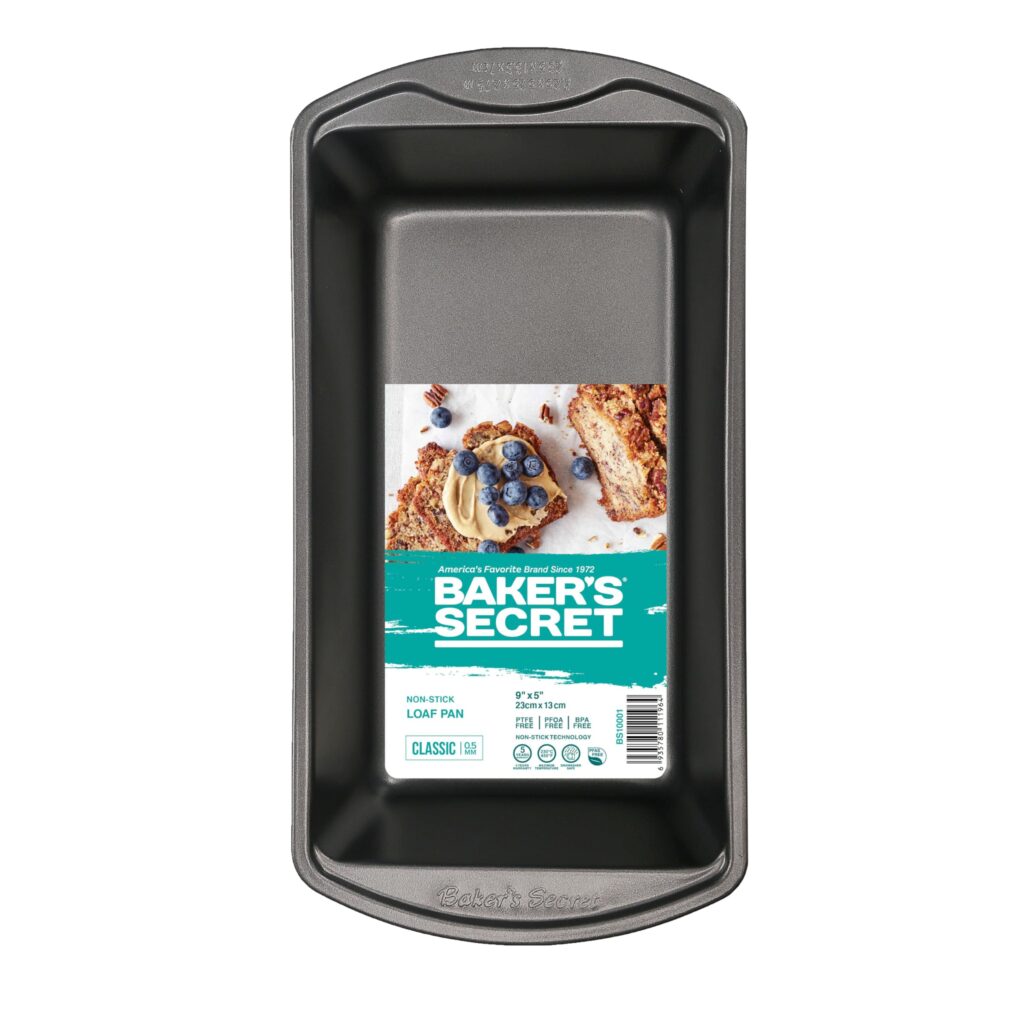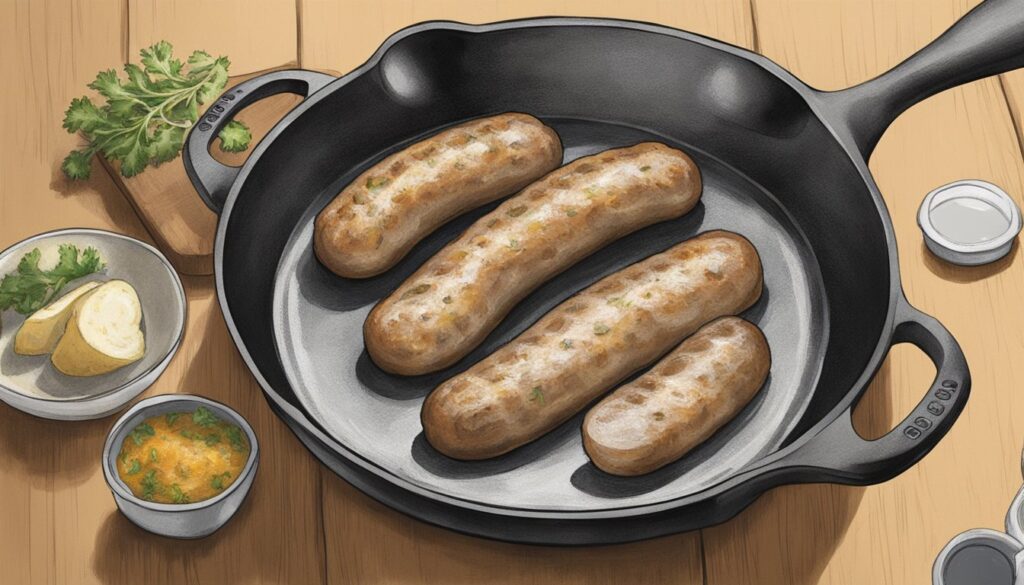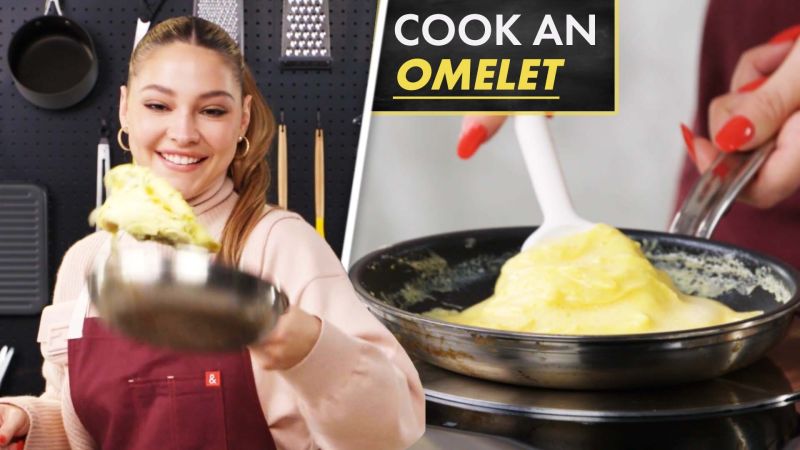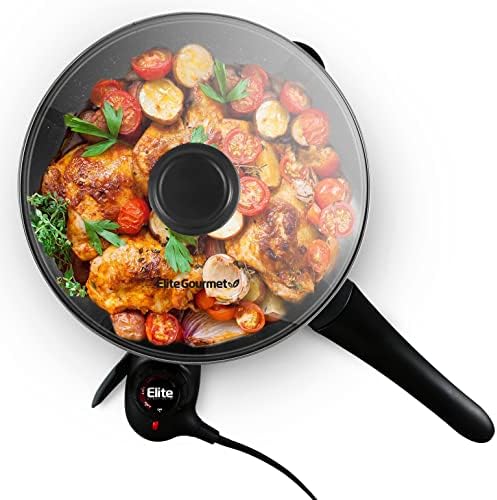A skillet is used for frying, searing, and browning foods. It is a versatile kitchen tool.
A skillet, often known as a frying pan, is a must-have in any kitchen. Made from materials like cast iron, stainless steel, or non-stick coatings, skillets offer exceptional heat distribution. Their flat bottom and flared sides make them ideal for cooking tasks that require stirring and flipping.
Whether you’re searing a steak, frying eggs, or sautéing vegetables, a skillet delivers excellent results. It can also transition from stovetop to oven, making it perfect for recipes that require multiple cooking methods. Investing in a quality skillet enhances your cooking experience, offering durability and versatility for a wide range of dishes.
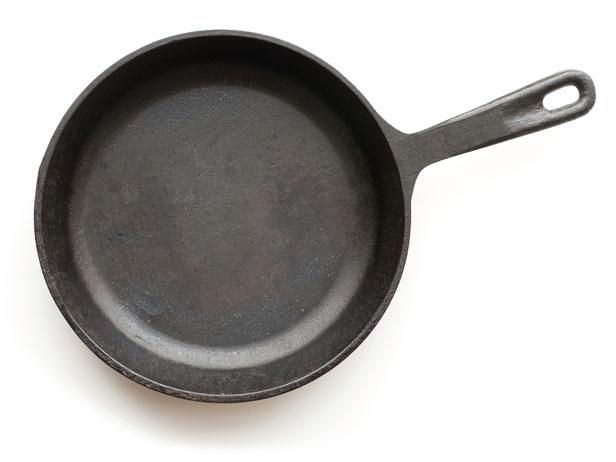
Credit: www.foodnetwork.com
Table of Contents
ToggleThe Essence Of A Skillet In Cooking
The skillet is a beloved tool in kitchens worldwide. Its versatility makes it essential for various cooking methods. From frying to baking, a skillet does it all. Understanding its significance can elevate your cooking experience.
A Brief History
Skillets have a rich history dating back centuries. Initially, they were simple metal pans used over open fires. Ancient civilizations utilized them for basic cooking needs. Over time, designs evolved, incorporating handles and deeper sides. By the 19th century, cast iron skillets became popular. Their durability and heat retention made them a kitchen staple.
Material Matters: Cast Iron Vs. Others
The material of a skillet impacts its performance. Cast iron is a favorite for its even heat distribution and retention. It’s perfect for searing and slow-cooking. Non-stick skillets are easier to clean and great for delicate foods. They prevent sticking but might not withstand high heat. Stainless steel skillets offer durability and a sleek look. They’re suitable for browning and deglazing. Aluminum skillets are lightweight and heat quickly. They’re often coated to prevent reactions with food. Understanding these differences helps in choosing the right skillet for your needs.
| Material | Pros | Cons |
|---|---|---|
| Cast Iron | Even heat, durable, versatile | Heavy, requires seasoning |
| Non-stick | Easy to clean, good for delicate foods | Less durable, not for high heat |
| Stainless Steel | Durable, sleek look | Can stick, requires oil |
| Aluminum | Lightweight, heats quickly | May react with food, needs coating |
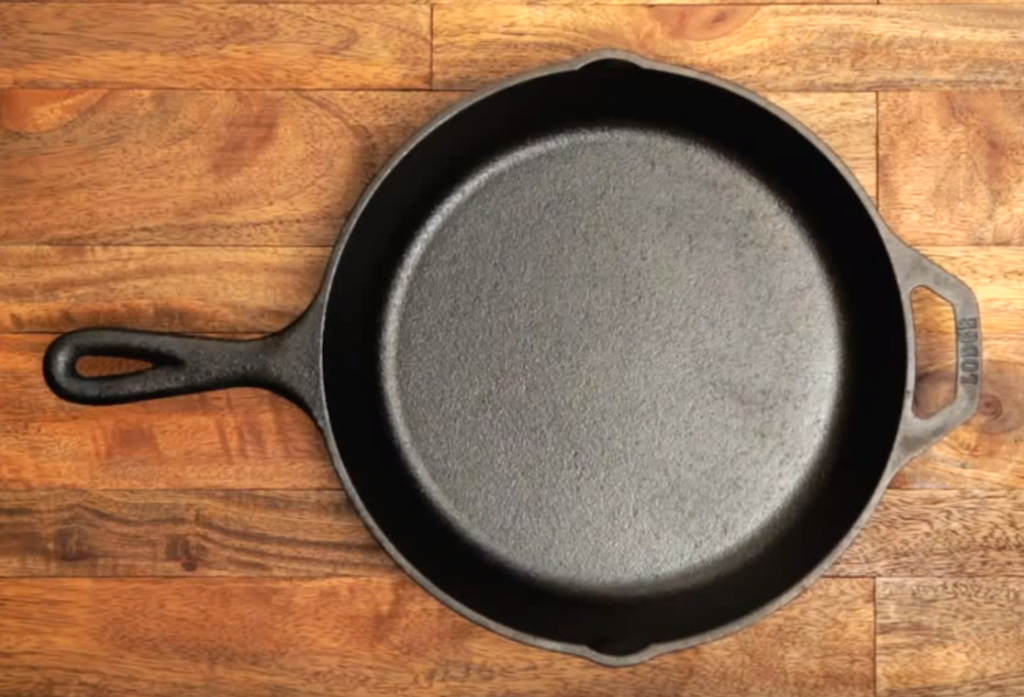
Credit: www.deeranddeerhunting.com
Skillets Vs. Other Cookware
When it comes to versatile cookware, skillets stand out. But how do they compare to other cookware types? This section explores the differences between skillets and other common kitchen tools.
Comparing Cooking Surfaces
Different cookware types have unique cooking surfaces. Each surface impacts the cooking process and food flavor.
| Cookware | Surface Material | Best Use |
|---|---|---|
| Skillet | Cast Iron or Stainless Steel | Frying, Searing, Baking |
| Non-stick Pan | Non-stick Coating | Cooking Eggs, Pancakes |
| Wok | Carbon Steel | Stir-frying |
Why Choose A Skillet?
- Durability: Skillets, especially cast iron, last for decades.
- Versatility: You can fry, sear, and bake in a skillet.
- Heat Retention: Skillets keep heat well, ensuring even cooking.
- Flavor: A seasoned skillet adds unique flavors to dishes.
Skillets offer unique benefits that other cookware can’t match. Their durability and versatility make them a kitchen staple. Whether frying, searing, or baking, skillets deliver excellent results every time.
Mastering Temperature Control
A skillet is a versatile kitchen tool. Mastering temperature control is key to its utility. Knowing how to manage heat ensures perfectly cooked meals every time. Let’s dive into the essentials of temperature control with your skillet.
The Heat Is On: Managing Temperature
Managing temperature with a skillet requires precision. Skillets can get very hot quickly. Start with a medium heat setting. Gradually increase or decrease as needed. Use a thermometer for accuracy. This helps avoid burning your food.
Tips For Even Cooking
Even cooking is essential for delicious meals. Here are some tips:
- Preheat your skillet before adding ingredients. This ensures consistent heat.
- Use oils with high smoke points. Examples include canola or grapeseed oil.
- Stir or flip food frequently. This prevents sticking and promotes even cooking.
Also, consider using a lid. It traps heat and moisture, aiding even cooking. A cast iron skillet retains heat well. This is ideal for dishes requiring steady temperatures.
| Heat Level | Usage |
|---|---|
| Low | Simmering sauces, gentle cooking |
| Medium | Sautéing vegetables, cooking eggs |
| High | Searing meats, stir-frying |
Master temperature control to make the most of your skillet. Practice and patience will lead to perfect dishes.
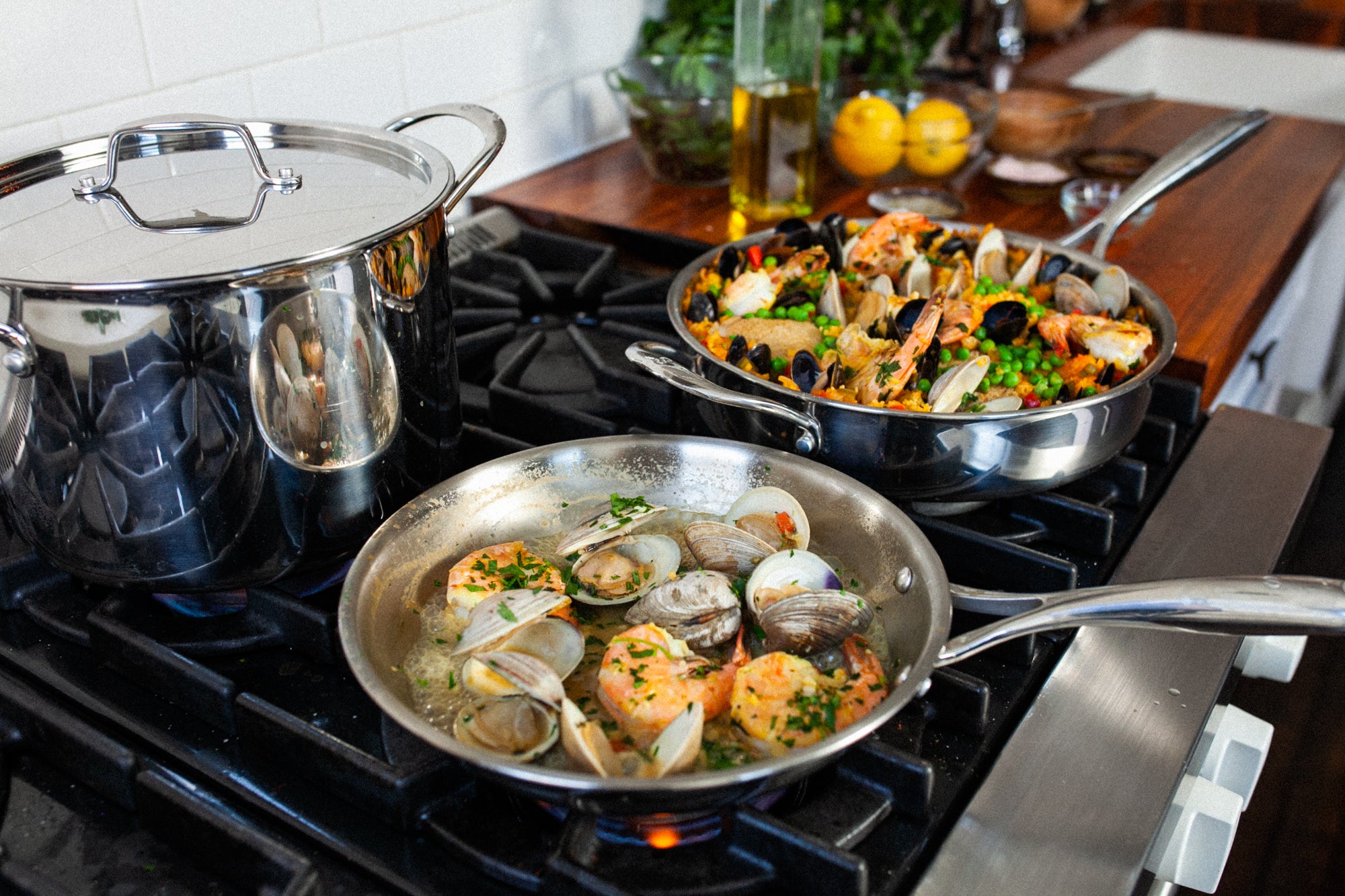
Credit: sardelkitchen.com
Versatile Cooking Techniques
A skillet is a chef’s best friend. Its versatility allows for various cooking techniques. From searing to baking, a skillet handles it all. Let’s explore the exciting world of skillet cooking.
Searing Perfection
Searing locks in flavors and creates a crispy crust. It is ideal for meats and vegetables. Heat your skillet until it’s smoking hot. Place your meat or veggies in the skillet. Don’t move them for a few minutes. This ensures a perfect sear. Flip once and sear the other side. Enjoy a restaurant-quality meal right at home.
Sautéing And Stir-frying
Sautéing and stir-frying are quick and easy cooking methods. A hot skillet ensures even cooking. Add a splash of oil to the skillet. Toss in your chopped vegetables, meats, or tofu. Stir continuously for even cooking. Season with your favorite spices. Enjoy a delicious and healthy meal in minutes.
Oven-baked Delights
Your skillet is oven-safe too. This makes it perfect for oven-baked dishes. Start by preheating your oven. Prepare your dish on the stovetop. Transfer the skillet to the oven. Bake until your dish is golden and cooked through. Skillet-baked dishes are always a hit.
| Cooking Technique | Best For |
|---|---|
| Searing | Meats, Vegetables |
| Sautéing & Stir-Frying | Vegetables, Meats, Tofu |
| Oven-Baking | Casseroles, Frittatas |
- Searing: Lock in flavors with a crispy crust.
- Sautéing and Stir-Frying: Quick and healthy meals.
- Oven-Baking: Perfect for casseroles and frittatas.
The Art Of Seasoning
Seasoning a skillet is a magical process that transforms it. This art creates a non-stick surface and protects the skillet from rust. A well-seasoned skillet enhances your cooking, adding flavor to your dishes.
Why Seasoning Is Key
Seasoning creates a smooth, non-stick surface on your skillet. It prevents food from sticking and makes cleaning easier. Seasoning also protects your skillet from rust and corrosion. This process enhances the skillet’s durability and longevity.
With proper seasoning, your skillet can last for generations. It becomes a cherished tool in the kitchen. A well-seasoned skillet also adds a unique flavor to your food. This depth of flavor develops over time, making your dishes special.
Step-by-step Seasoning Guide
Follow these simple steps to season your skillet:
- Clean the Skillet: Wash with hot water and mild soap.
- Dry Thoroughly: Use a towel to remove all moisture.
- Apply Oil: Rub a thin layer of vegetable oil over the surface.
- Heat the Skillet: Place it upside down in an oven at 375°F for one hour.
- Cool Down: Let the skillet cool in the oven before storing.
Repeat these steps several times for a stronger seasoning. Your skillet will develop a beautiful, non-stick surface.
Remember, every time you cook with oil, your skillet gets a bit more seasoned. Enjoy the journey of creating a perfectly seasoned skillet!
Cleaning And Maintenance
Keeping your skillet in top shape ensures it lasts for years. Proper cleaning and maintenance can prevent rust and food buildup. Here are some essential tips to keep your skillet pristine.
Daily Care Tips
Daily care helps maintain your skillet’s quality. Follow these simple steps:
- Wash your skillet with warm water and a soft sponge.
- Avoid using soap or steel wool to prevent damage.
- Dry your skillet immediately with a clean towel.
- Apply a thin layer of cooking oil to the surface.
- Store in a dry place to avoid moisture buildup.
Maintaining a clean skillet ensures better cooking performance. Always dry it completely to prevent rust.
Restoring An Old Skillet
Old skillets can be brought back to life with proper restoration. Follow these steps:
- Scrub the skillet with a mix of salt and oil.
- Rinse with warm water and dry it thoroughly.
- Heat the skillet on the stove to remove any moisture.
- Apply a layer of oil and bake in the oven at 350°F for an hour.
- Repeat the oiling and baking process for better seasoning.
Regular maintenance keeps your skillet non-stick and rust-free. Always store it in a dry, cool place.
Culinary Creations With A Skillet
A skillet is a versatile tool in any kitchen. It can be used to create a wide array of dishes, from simple breakfasts to elaborate dinners. With its ability to evenly distribute heat, the skillet ensures that your food is cooked perfectly every time. Let’s explore some delicious recipes and see how you can make the most of your skillet.
Recipes To Get You Started
- Scrambled Eggs: Whisk eggs, pour into a hot skillet, and stir until cooked.
- Grilled Cheese Sandwich: Butter bread, add cheese, and cook until golden brown.
- Chicken Stir-Fry: Sauté chicken, add veggies, and season to taste.
- Pan-Seared Steak: Season steak, cook in a hot skillet, and let it rest.
- Vegetable Frittata: Mix eggs with veggies, pour into skillet, and bake.
From Breakfast To Dinner
| Meal | Dish | Ingredients |
|---|---|---|
| Breakfast | Pancakes | Flour, milk, eggs, sugar, baking powder |
| Lunch | Quesadillas | Tortillas, cheese, chicken, veggies |
| Dinner | Salmon Fillet | Salmon, olive oil, lemon, herbs |
With a skillet, you can cook a variety of meals. Whether it’s a quick breakfast, a hearty lunch, or a delicious dinner, the skillet is your go-to tool. Enjoy experimenting with new recipes and creating culinary masterpieces!
Choosing Your Skillet
Choosing the perfect skillet can transform your cooking experience. Each type of skillet offers unique benefits. Factors like material, size, and handle type matter. Here’s a guide to help you select the right one.
Factors To Consider
- Material: Cast iron, stainless steel, non-stick, and carbon steel are popular choices.
- Size: Common sizes range from 8 to 12 inches. Choose based on your cooking needs.
- Handle: Look for handles that stay cool and provide a firm grip.
- Weight: Heavier skillets retain heat better but can be hard to handle.
Top Picks And Recommendations
| Skillet Type | Best For | Top Recommendation |
|---|---|---|
| Cast Iron | High heat cooking and durability | Lodge 10.25-Inch Cast Iron Skillet |
| Stainless Steel | Even heating and versatility | All-Clad D3 Stainless 12-Inch Fry Pan |
| Non-Stick | Easy cleanup and low-fat cooking | Calphalon Contemporary Nonstick 10-Inch Fry Pan |
| Carbon Steel | Quick heating and light weight | Matfer Bourgeat Black Steel Round Fry Pan |
Evaluate these factors before making your choice. The right skillet makes cooking easier and more enjoyable.
Frequently Asked Questions
What Is A Skillet Used For?
A skillet is used for frying, searing, and browning foods. Its flat base ensures even cooking. It’s versatile and can be used for various recipes.
Can You Bake With A Skillet?
Yes, skillets are oven-safe and perfect for baking. They retain heat well, making them ideal for dishes like cornbread and frittatas.
What’s The Difference Between A Skillet And A Frying Pan?
A skillet typically has slightly sloped sides, while a frying pan has flat sides. Skillets are more versatile for cooking methods.
Are Skillets Good For Sautéing?
Yes, skillets are excellent for sautéing. Their wide surface area allows for even cooking and efficient heat distribution.
Conclusion
A skillet is a versatile tool for any kitchen. From frying to baking, it handles various cooking tasks with ease. Investing in a high-quality skillet can elevate your culinary skills. Remember to season and care for it properly to enjoy its benefits for years.
Happy cooking!

